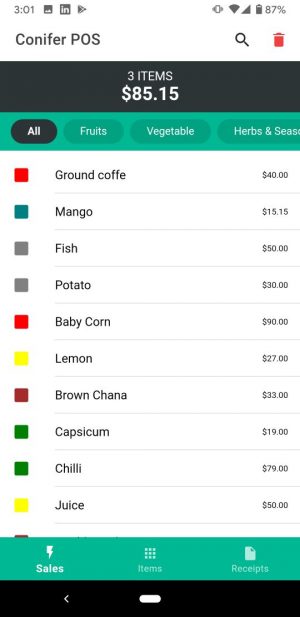In today’s world, the demand for software applications that work across multiple platforms is higher than ever before. While there are several ways to achieve this goal, building cross-platform desktop applications with Electron.js has become a popular choice among developers. Electron.js is a powerful framework that enables the creation of desktop applications for Windows, macOS, and Linux platforms using web technologies such as HTML, CSS, and JavaScript. This article explores the benefits of using Electron.js and how to build cross-platform desktop applications using this framework.
Introduction
Building cross-platform desktop applications can be a challenging task. With different operating systems and their unique requirements, developers often struggle to create applications that work seamlessly across multiple platforms. However, Electron.js offers a solution to this problem. It enables developers to build desktop applications using web technologies, making it easier to create cross-platform applications that work consistently across different operating systems.
What is Electron.js?
Electron.js is an open-source framework developed by GitHub for building desktop applications using web technologies. It is built on top of Node.js and Chromium, which enables developers to use HTML, CSS, and JavaScript to build desktop applications that can run on Windows, macOS, and Linux platforms. Electron.js provides a set of APIs that allow developers to interact with the underlying operating system, making it easier to create desktop applications with native features.
Advantages of using Electron.js
There are several benefits of using Electron.js for building cross-platform desktop applications:
- Code reusability: With Electron.js, developers can use web technologies to build desktop applications that work across multiple platforms, eliminating the need for separate codebases for different platforms.
- Native capabilities: Electron.js provides a set of APIs that allow developers to access native features such as file system access, notifications, and system tray integration, making it easier to create desktop applications with native capabilities.
- Community support: Electron.js has a vibrant community of developers who contribute to its development, making it easier to find solutions to common problems and receive support when needed.
- Easy deployment: Electron.js provides tools for packaging and distributing desktop applications, making it easier for developers to deploy their applications to multiple platforms.
- Familiar web development tools: Developers can use familiar web development tools such as HTML, CSS, and JavaScript to build desktop applications, making it easier to get started with Electron.js.
Getting started with Electron.js
Before getting started with Electron.js development, you will need to set up your development environment.
Setting up the development environment
To start developing with Electron.js, you will need to have Node.js installed on your machine. Once you have Node.js installed, you can install Electron.js using the following command:
npm install electron
Once Electron.js is installed, you can create a new project using the following command:
mkdir my-electron-app
cd my-electron-app
npm init -yThis will create a new project with a package.json file. You can then create a new file called main.js, which will be the main entry point for your application.
Building a simple desktop application
To get started with Electron.js development, you can build a simple desktop application that displays a window with a message. Here is an example of how to create a simple desktop application using Electron.js:
const { app, BrowserWindow } = require('electron')
function createWindow() {
const win = new BrowserWindow({
width: 800,
height: 600,
webPreferences: {
nodeIntegration: true
}
})
win.loadFile('index.html')
}
app.whenReady().then(() => {
createWindow()
app.on('activate', () => {
if (BrowserWindow.getAllWindows().length === 0) {
createWindow()
}
})
})
app.on('window-all-closed', () => {
if (process.platform !== 'darwin') {
app.quit()
}
})
This code creates a new window with a width of 800 pixels and a height of 600 pixels. The window loads an HTML file called index.html, which you can create in the same directory as your main.js file. You can add your message to the index.html file.
Building a cross-platform desktop application
To build a cross-platform desktop application using Electron.js, you will need to make sure that your code works on multiple operating systems. Here are some tips for building cross-platform desktop applications:
- Test on different platforms: Make sure to test your application on Windows, macOS, and Linux to ensure that it works on all platforms.
- Use platform-specific code: Use platform-specific code to ensure that your application works properly on each platform. For example, use the fs module in Node.js to access the file system on Windows and Linux, but use the Finder API on macOS.
- Consider performance: Consider the performance of your application on different platforms. For example, some operating systems may have lower hardware specifications, so you will need to optimize your application to work on these platforms.
Packaging and distributing the application
Once you have built your application, you will need to package and distribute it to your users. Electron.js provides tools for packaging and distributing desktop applications, making it easy to deploy your application to multiple platforms.
To package your application, you can use tools such as Electron Packager or Electron Forge. These tools allow you to package your application as a standalone executable file for each platform.
To distribute your application, you can use platforms such as the Mac App Store, Microsoft Store, or your own website.
Testing and debugging the application
Testing and debugging are critical parts of the development process. Electron.js provides tools for testing and debugging desktop applications.
You can use tools such as Spectron or WebDriverIO to test your application. These tools allow you to write automated tests for your application and run them on multiple platforms.
For debugging, you can use the built-in DevTools in Electron.js. These tools allow you to inspect and debug your application in real-time.
Performance considerations
Performance is an important consideration when building desktop applications. Here are some tips for optimizing the performance of your Electron.js application:
- Use web workers: Use web workers to run tasks in the background and improve the performance of your application.
- Use lazy loading: Use lazy loading to load only the parts of your application that are needed at runtime.
- Optimize images: Optimize images to reduce the size of your application and improve its performance.
Best practices for Electron.js development
Here are some best practices to follow when developing desktop applications with Electron.js:
- Keep it simple: Keep your code simple and easy to understand. Avoid complex code that can be difficult to maintain.
- Use native capabilities: Use the native capabilities of each platform to make your application feel like a native application.
- Use a consistent UI: Use a consistent UI across all platforms to provide a familiar experience to your users.
- Use third-party libraries carefully: Use third-party libraries carefully and only when necessary. Make sure to choose libraries that are actively maintained and have a large user base.
- Handle errors gracefully: Handle errors gracefully and provide clear error messages to your users.
- Keep security in mind: Keep security in mind when developing your application. Make sure to use secure communication protocols and encrypt sensitive data.
- Keep your application up to date: Keep your application up to date by releasing regular updates and fixing any bugs or security issues.
Conclusion
Electron.js is a powerful framework for building cross-platform desktop applications using web technologies such as HTML, CSS, and JavaScript. By following best practices and optimizing performance, you can create high-quality applications that run smoothly on multiple platforms. With its wide range of features and tools for packaging and distribution, Electron.js is a great choice for building desktop applications.





